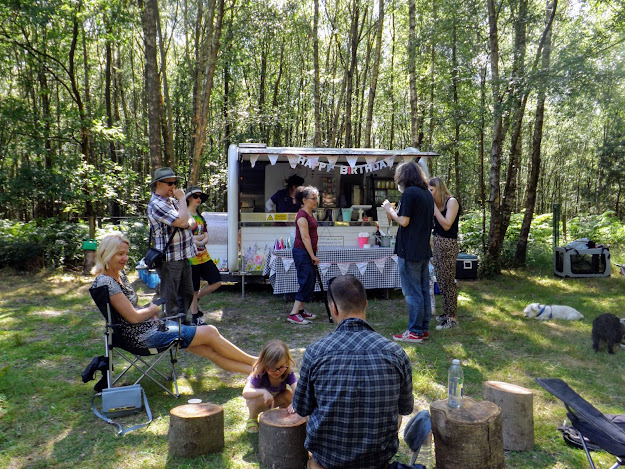Our ongoing tree planting project at Old Copse is a vital component of the restoration of 30 acres of ASNW, (partially PAWS), situated in an AONB, part designated SSSI.*
In the mid 1950's almost all of the original ancient woodland was clear felled and Scots Pine planted across the site. The big storm of 1987 blew down half of the plantation, and birch and other broadleaves are now regenerating in areas where once only pines grew. Our project is to fell the majority of the remaining Scots Pine plantation, and return it to mixed woodland. We are doing this gradually and carefully and replanting in the gaps to maintain 'continuous cover'.
As part of our management plan we started by felling approximately a third of the Scots Pine plantation in December 2015, and in late 2016 started planting a mix of broadleaves: oak, beech, wild cherry, hornbeam, chestnut and hazel, in the open areas created by the felling. The species mix has been chosen to match those occurring naturally on the site, supplemented by a few English native trees not found within the existing vegetative community, such as small-leaved limes. We aim to achieve a healthy diversity to help the wood withstand the threats of climate change. We have now planted well over 1,000 trees. Every year we fell a little more and replant in the gaps.
 |
| Replanting in the gaps in the plantation |
 |
| We have planted more than 1000 trees. Note also regenerating ground flora encouraged by the removal of bracken. |
Replanting is augmented by a great deal of natural regeneration prompted by the felling, predominantly oak, beech, rowan, alder buckthorn and goat willow. All promising regeneration has to be protected from deer predation. We also transplant any regeneration growing in the 'wrong place' such as the middle of the rides, and grow them on in our deer proof tree enclosure before planting them out elsewhere in the wood.
By implementing the continuous cover system, newly planted trees might not grow as fast as if they were planted on an open, treeless site, but we've been surprised and pleased at their good rate of growth. We've also been quite lucky with the weather over the past few years, especially the last wet winter which helped the newly planted whips settle in and make it through hot, dry summers. Losses have been minimal. We've been unable to find long lasting, biodegradable tree tubes so we use a mixture of recycled, mesh, standard plastic and home-made wire shelters.
The future: To continue what we've been doing since late 2016, aiming to fell a further 20% or so of Scots Pine in the next few years, replant, and repeat until the majority of the Scots Pine have been replaced by broadleaves. It is very encouraging to see the difference in the woodland since the felling and replanting began just 3 1/2 years ago. Lastly, because restoring a wood costs money, a further bonus of the felling operations is that the sale of timber for both chip and sawlogs has helped finance other projects in the wood, including the planting of over half a mile of boundary hedge.
*
ASNW - Ancient Semi-Natural Woodland
PAWS - Plantation on an Ancient Woodland Site
AONB - Area of Outstanding Natural Beauty
SSSI - Site of Special Scientific Interest















